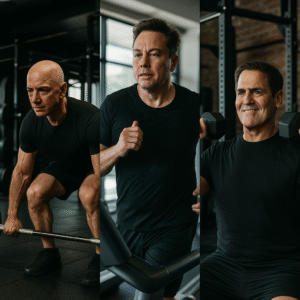In the world of fitness, one often hears the phrase “practice makes perfect.” But what if I told you that perfecting your form is just as crucial—if not more so—than simply repeating exercises? Welcome to a discussion on “The Importance of Proper Form in Fitness Instruction.” Form, the alignment and execution of movements during exercise, is the cornerstone of any effective fitness regimen. Whether you’re lifting weights, doing yoga, or engaging in cardiovascular activities, proper form is non-negotiable. Not only does it prevent injury, but it also ensures that you’re targeting the right muscles and getting the most out of your workout. In this blog, we’ll delve into why form matters, how it impacts your fitness journey, and practical tips for improving it. From beginners to seasoned athletes, everyone can benefit from a refresher on the fundamentals of form. So, let’s dive in and discover how mastering form can elevate your fitness game to new heights!
Teaching Proper Form: Strategies for Fitness Instructors
As a fitness instructor, one of your primary responsibilities is ensuring that your clients perform exercises with proper form. Not only does correct form minimize the risk of injury, but it also maximizes the effectiveness of each movement, leading to better results. However, teaching proper form effectively requires more than just demonstrating the correct technique. It involves clear communication, keen observation, and the ability to provide constructive feedback. In this article, we’ll explore eight strategies to help fitness instructors teach proper form to their clients successfully.

Demonstrate Proper Form: Lead by Example
Start by demonstrating each exercise with flawless form. This serves as a visual reference for your clients to emulate. Break down the movement step by step, highlighting key points such as posture, alignment, and range of motion. Utilize mirrors or video feedback to enhance visual learning and ensure clarity in your demonstrations.
Provide Clear Verbal Cues
Verbal cues are invaluable for guiding clients through exercises. Use concise, easy-to-understand instructions to cue proper alignment and movement patterns. Avoid jargon and technical terms that may confuse your clients. Instead, focus on descriptive cues that paint a clear picture of the desired action. For example, instead of saying “engage your core,” you might say “pull your belly button towards your spine.”
Use Analogies and Imagery
Analogies and imagery can help clients better understand complex movement concepts. Compare movements to everyday actions or objects they’re familiar with. For instance, when teaching proper squat form, you might liken it to sitting back into a chair. Similarly, using imagery such as “imagine you’re zipping up a tight pair of jeans” can help cue engagement of the core muscles.
Offer Hands-On Corrections
Sometimes, clients may struggle to grasp proper form through verbal cues alone. Offering hands-on corrections can provide instant feedback and help clients feel the correct alignment and muscle engagement. Always ask for permission before touching clients and provide gentle guidance to adjust their position. Be mindful of personal boundaries and ensure a supportive and respectful environment.
Encourage Mindfulness and Body Awareness
Foster mindfulness and body awareness during workouts by encouraging clients to tune into their bodies. Encourage them to focus on how each movement feels, rather than just going through the motions. Teach them to recognize the difference between proper and improper form by paying attention to subtle cues such as tension, alignment, and balance.
Adapting Form for Different Body Types and Abilities
Fitness is not one-size-fits-all. Every individual has a unique body type, physical capabilities, and limitations. As a fitness instructor, it’s crucial to recognize and respect these differences by adapting exercise form to suit each client’s needs. Adapting form for different body types and abilities not only promotes inclusivity but also ensures safety and effectiveness in workouts. In this article, we’ll explore eight strategies for fitness instructors to adapt form based on varying body types and abilities, fostering an environment where all clients can thrive in their fitness journey.
Assess Individual Needs
Before designing a workout program, take the time to assess each client’s body type, mobility, flexibility, and any existing injuries or limitations. Conduct thorough consultations and screenings to gather relevant information and tailor your approach accordingly. Understanding your clients’ unique needs lays the foundation for adapting form effectively.
Offer Modifications and Progressions
Recognize that not every client will be able to perform exercises in their standard form. Offer modifications to accommodate different abilities and mobility levels. For example, individuals with limited mobility in their wrists may perform push-ups on an elevated surface or using dumbbells for support. Conversely, provide progressions for more advanced clients to continue challenging themselves while maintaining proper form.
Adjust Range of Motion
Adapt exercise form by adjusting the range of motion to suit individual capabilities. Some clients may have limited flexibility or joint mobility, making full-range movements challenging or risky. Encourage them to perform partial range-of-motion exercises initially, gradually increasing the range as they build strength and flexibility. Focus on quality over quantity to ensure safety and effectiveness.
Modify Equipment Usage
Tailor the use of equipment to accommodate different body types and abilities. For example, individuals with larger body sizes may require wider resistance bands or larger stability balls to ensure proper support and stability during exercises. Similarly, individuals with limited grip strength or wrist mobility may benefit from using alternative grip attachments or padded handles on equipment.
Provide Verbal and Visual Cues
Use clear and concise verbal cues to guide clients through modified exercises. Provide detailed instructions on proper alignment, breathing techniques, and muscle engagement to help them perform movements safely and effectively. Supplement verbal cues with visual demonstrations and examples to reinforce understanding and ensure correct execution.
Enhancing Performance Through Correct Form
Proper form isn’t just about avoiding injuries; it’s a cornerstone of maximizing performance in fitness. When executed correctly, each movement becomes more efficient, targeting the intended muscles more effectively and reducing energy waste. In this article, we’ll explore key points on how correct form enhances performance and leads to better results in fitness training.
- Muscle Activation: Correct form ensures optimal muscle activation, targeting the intended muscles and maximizing their engagement during exercises. This leads to more significant strength gains and muscle development over time.
- Joint Stability: Proper form promotes joint stability by maintaining alignment and distributing forces evenly throughout the body. This reduces the risk of joint injuries and allows for safer and more effective movement patterns.
- Power Generation: By maintaining proper alignment and technique, individuals can generate more power and force during exercises such as squats, deadlifts, and overhead presses. This translates to improved athletic performance and functional strength.
- Improved Range of Motion: Correct form often involves working through a full range of motion, which can improve flexibility and mobility over time. Increased range of motion allows for better muscle recruitment and enhances overall movement quality.
Incorporating proper form into your fitness routine is essential for unlocking your full potential and achieving your performance goals.
Conclusion
At the Results Transformation Center, we recognize the paramount significance of adhering to proper form in fitness instruction. Ensuring clients understand and implement correct techniques not only fosters optimal results but also mitigates the risk of injury. By prioritizing form, we empower individuals to achieve their fitness goals safely and efficiently. At our Sparks, Nevada location, we are committed to providing comprehensive guidance and support, fostering a culture of wellness and longevity in our community.
[/vc_column_text][/vc_column][/vc_row]








